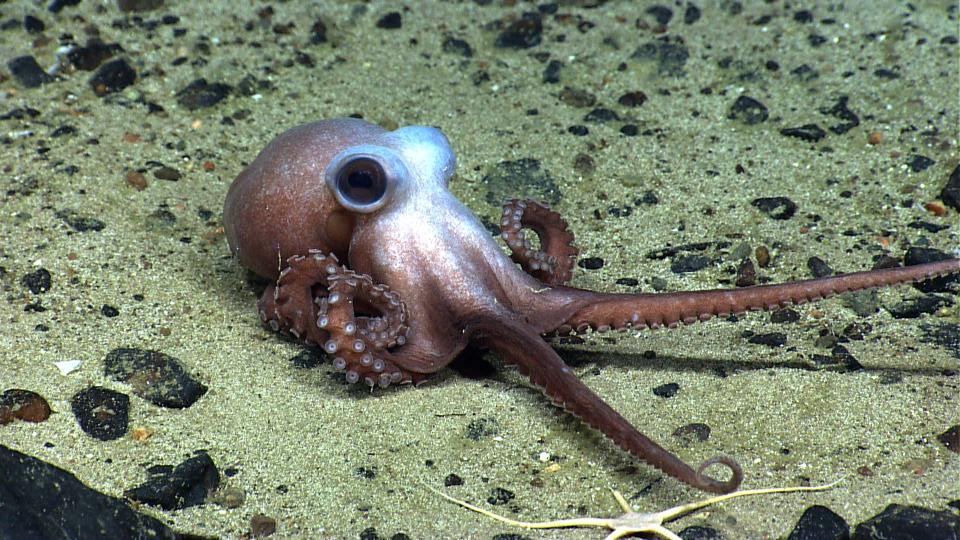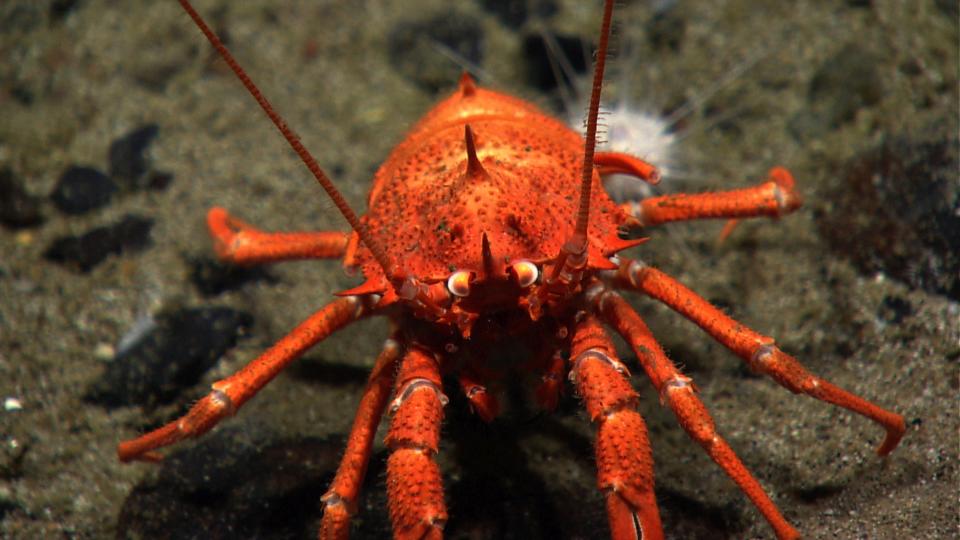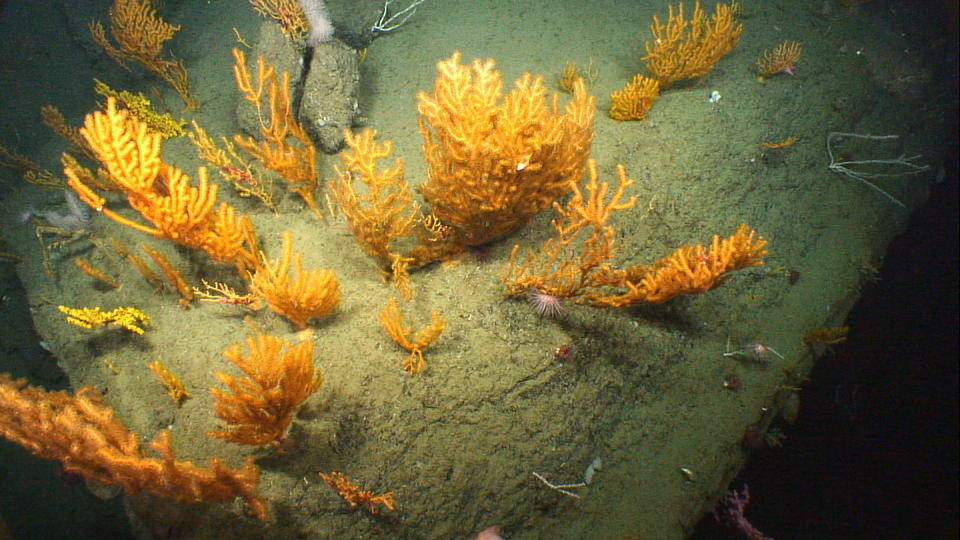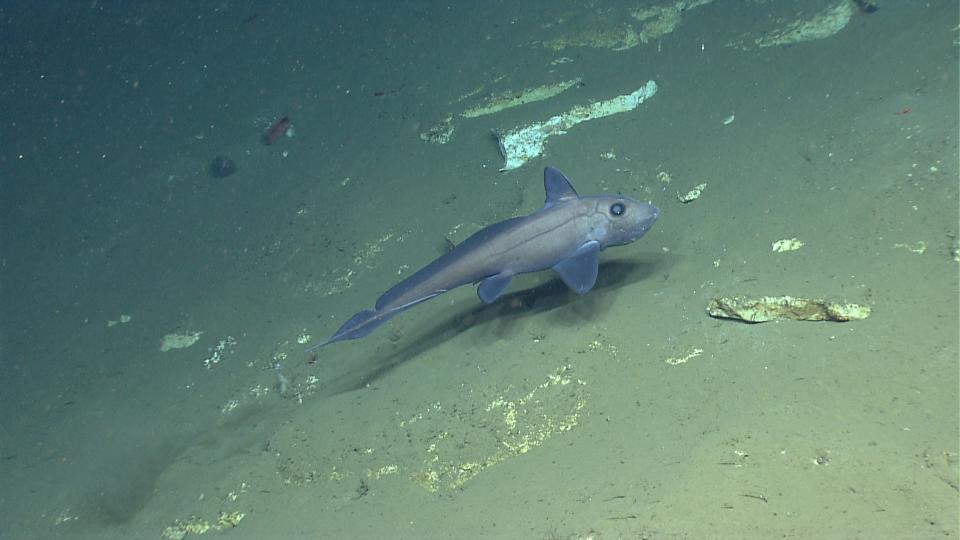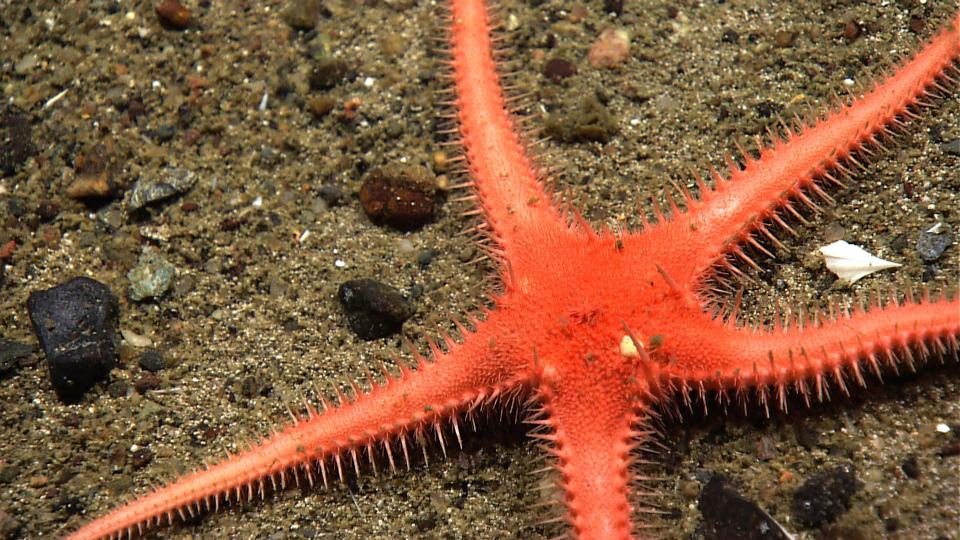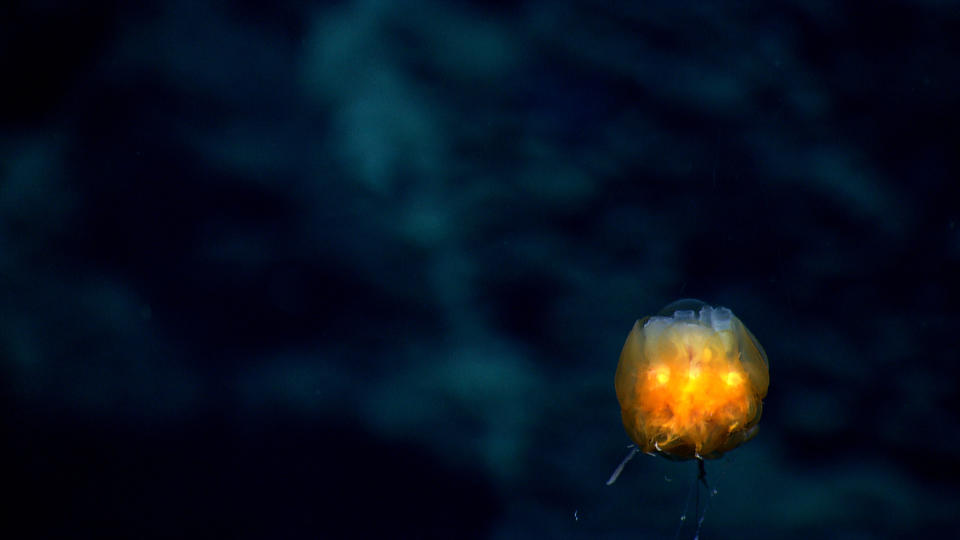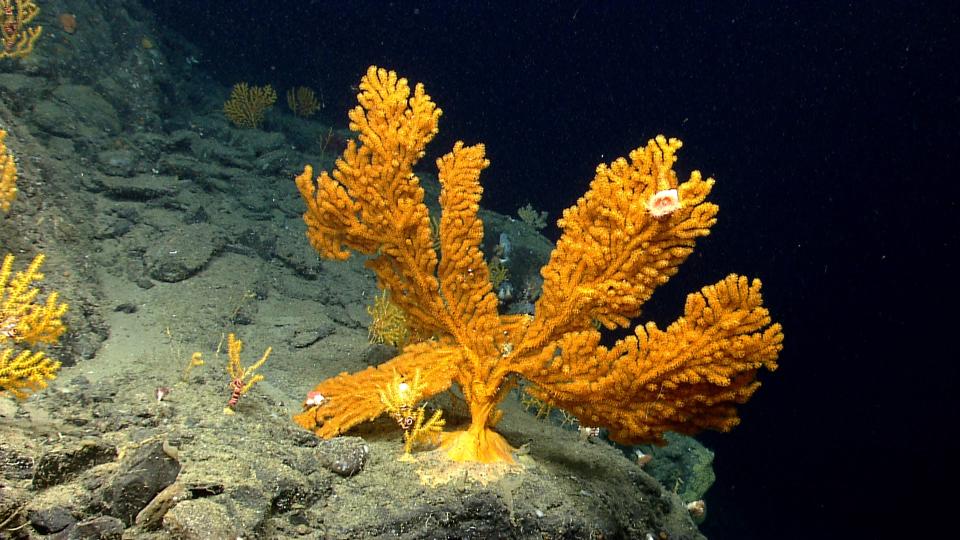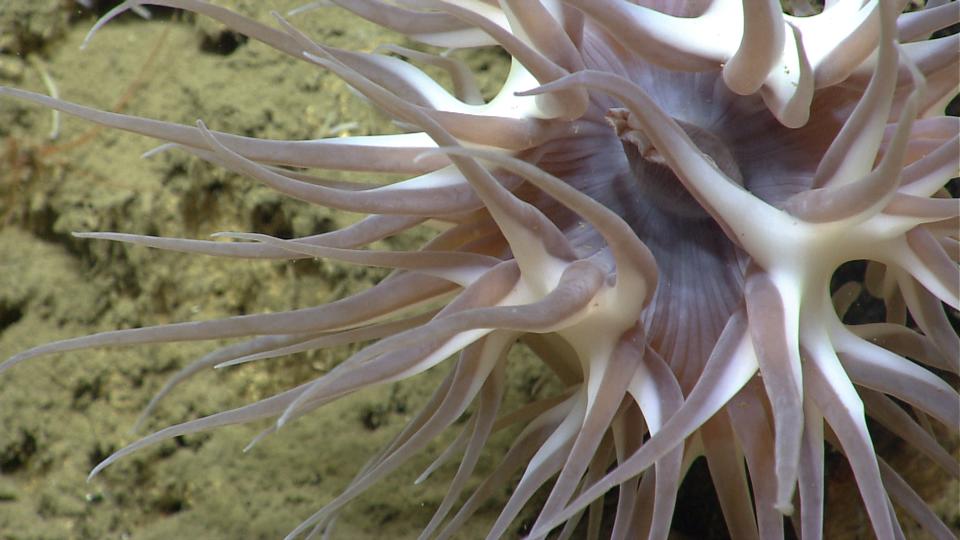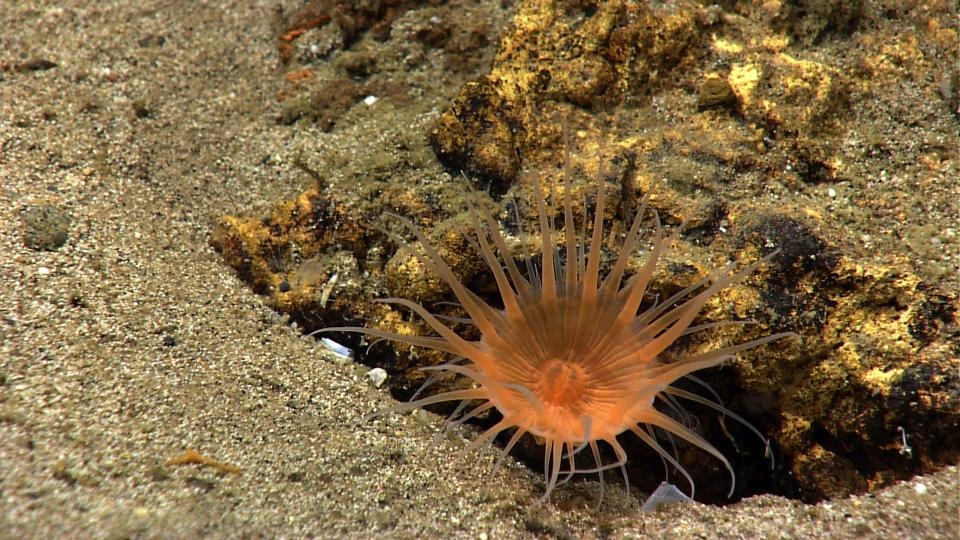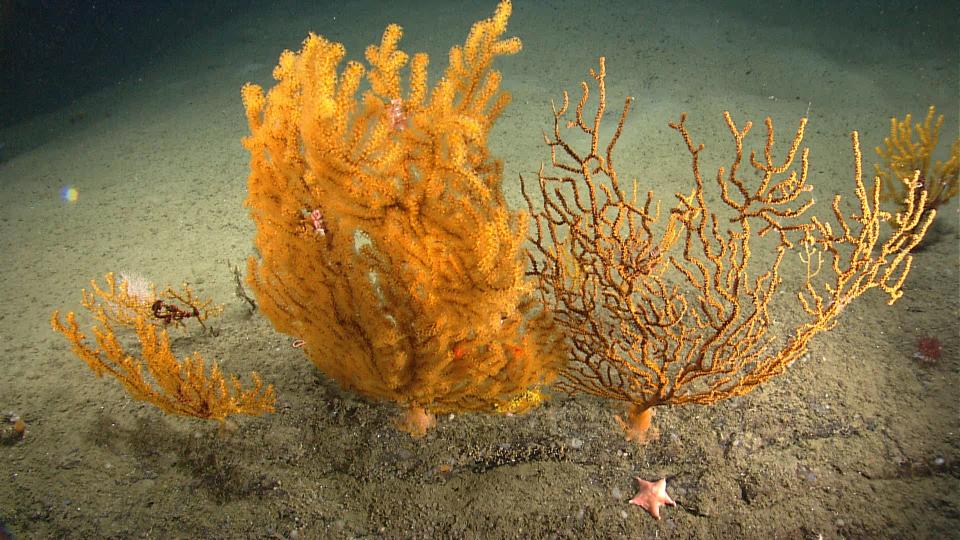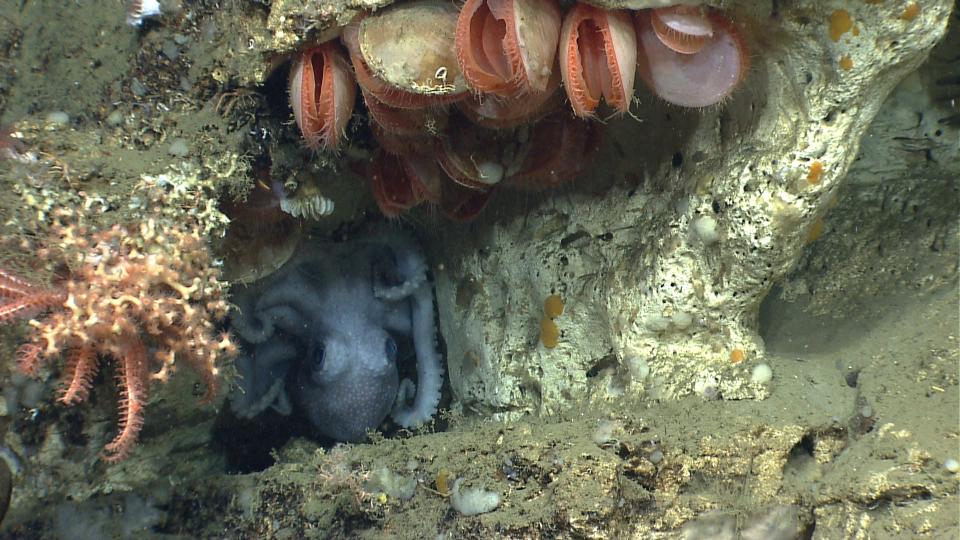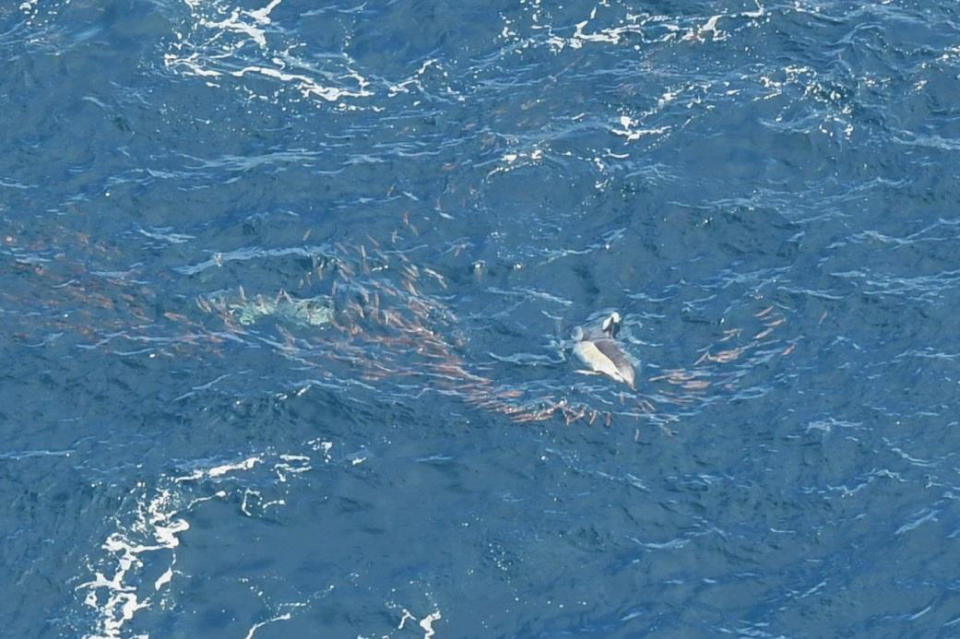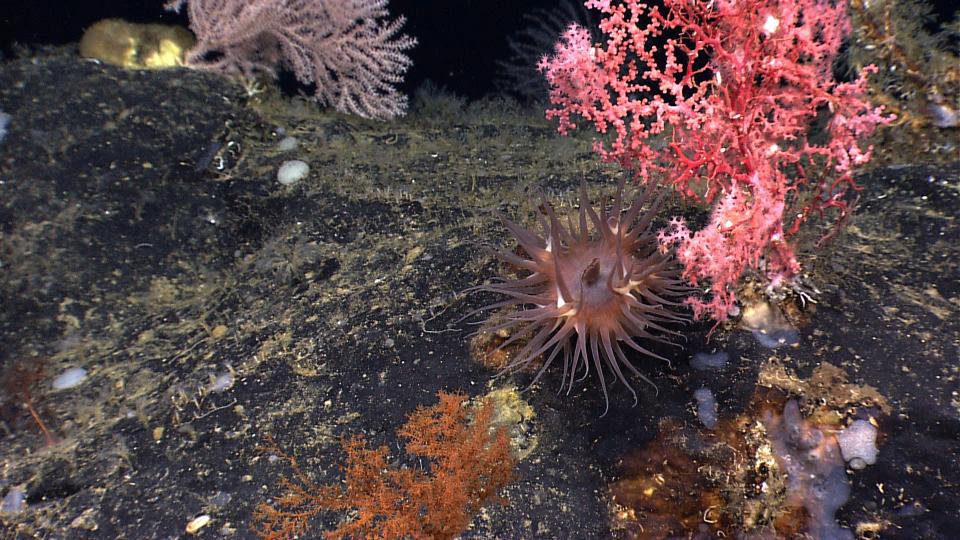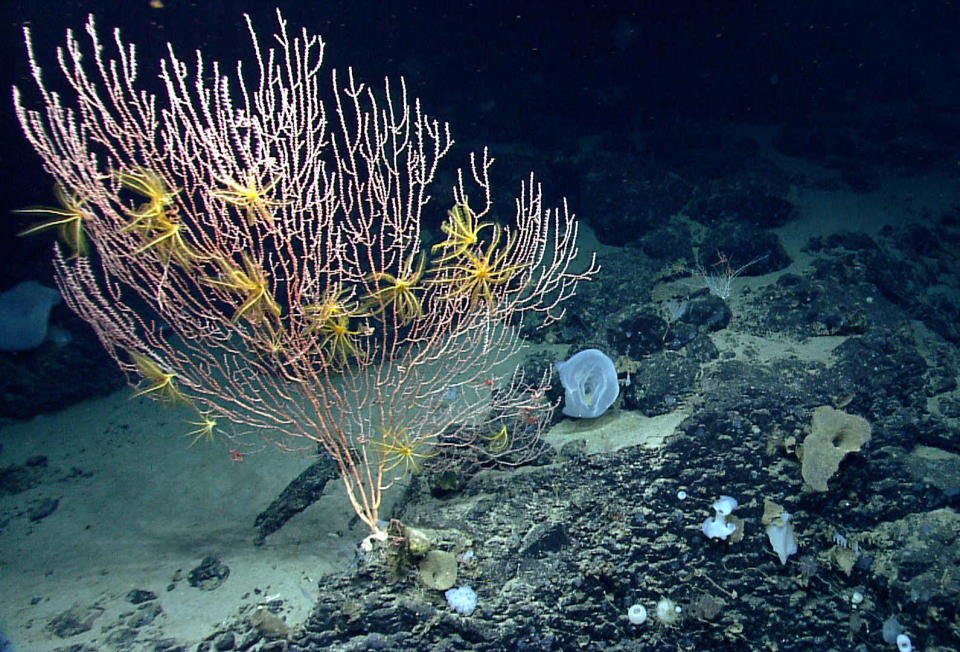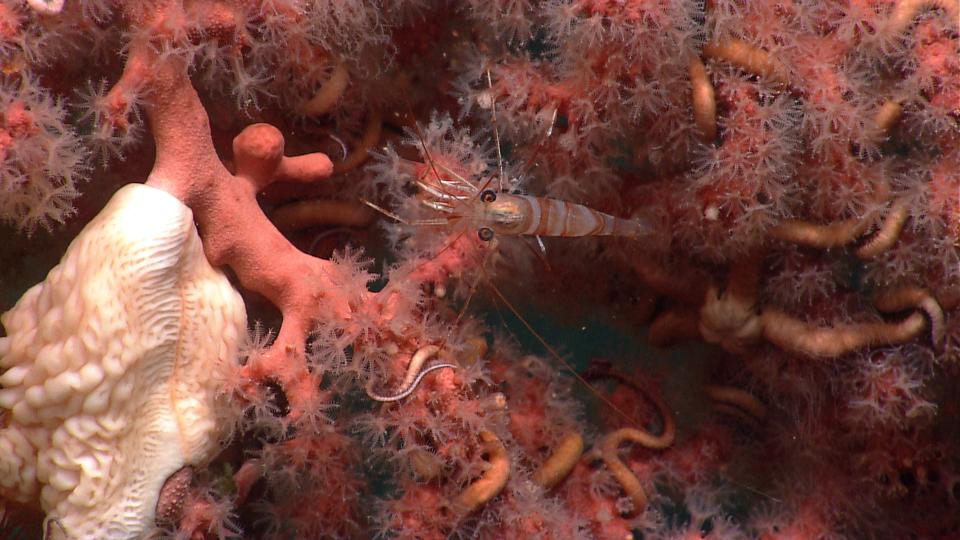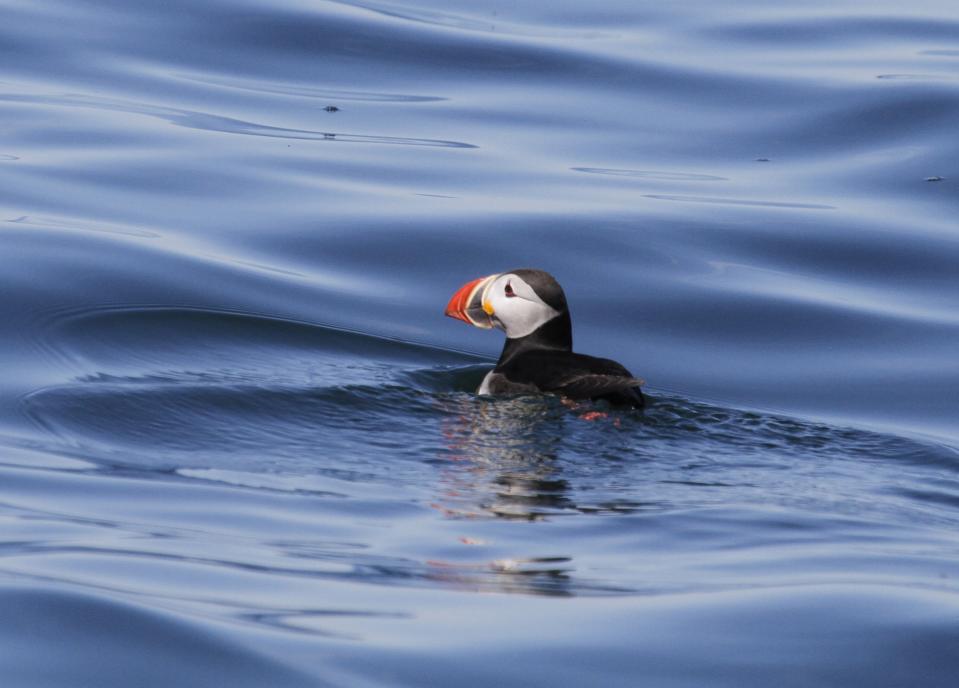Photos: Northeast Canyons and Seamounts Monument
The Northeast Canyons and Seamounts National Marine Monument protects 4,913 square miles roughly 150 miles southeast of Cape Cod at the edge of the continental shelf. Three canyons and four extinct volcanoes as tall as the Rockies are home to more than 1,000 species where the shallow waters off the East Coast drop sharply into the depths of the northwestern Atlantic.
Marine biologists are still studying the area’s rare sea life, but Interior Secretary Ryan Zinke recommended that President Trump reduce or eliminate the monument designation and open it to commercial exploitation.
Read story by Michael Walsh: National marine monument off New England still on Trump’s chopping block ?
See more news-related photo galleries and follow us on Yahoo News Photo Twitter and Tumblr.
An octopus stretches its tentacles on Physalia Seamount. This animal is a predator like all octopus and squid species and feeds on fish and invertebrates on the seamount. Little detail is known about the lives of many deep-sea creatures. (Photo: NOAA Okeanos Explorer Program, 2013 Northeast U.S. Canyons Expedition Science Team)
The squat lobster (genus Euminida) is more closely related to hermit crabs than to true lobsters. They generally fold their tails and hide in crevices on the seafloor or amongs corals. They use their long arms and claws to scavenge food but also can grab large zooplankton and small fish from the water column as they drift by. (Photo: Atlantic Canyons and Seamounts 2014 Science Team/NOAA Okeanos Explorer Program)
Deepwater corals on the western wall of Oceanographer Canyon. (Photo: NOAA Okeanos Explorer Program, 2013 Northeast U.S. Canyons Expedition Science Team)
Chimaera (Hydrolagus affinis) are cartilaginous fish most closely related to sharks, also known as ghost sharks and rat fish. This species is most commonly found below 1,000 meters. The pores around the head serve as sensors for small variations in pressure, and with large eyes are used to find invertebrate prey in the twilight depths of the ocean. (Photo: NOAA Okeanos Explorer Program, 2013 Northeast U.S. Canyons Expedition Science Team)
This colony of bamboo coral (family Isididae), found along the side of Mytilus Seamount, has crinoids attached to it. (Photo: Northeast Canyons 2013 Science Team/NOAA Okeanos Explorer Program)
If you look closely you can see a ctenophore or comb jelly being digested inside the larger predatory beroid ctenophore. (Photo: NOAA Okeanos Explorer Program; 2013 Northeast U.S. Canyons Expedition Science Team)
This rare glowing dandelion siphonophore is composed of many individual animals working together to absorb nutrients. (Photo: NOAA Okeanos Explorer Program; 2013 Northeast U.S. Canyons Expedition Science Team)
Fan corals (genus Paramuricea) in Oceanographer Canyon. Corals are colonial animals and capture food using tentacles with stinging cells on individual polyps. Polyps are fragile and can be retracted into the coral skeleton for protection from predators, turbulence and other forms of disturbance. The fan on the right has most of its polyps retracted and provides a view of the coral skeleton. (Photo: Northeast Canyons 2013 Science Team/NOAA Okeanos Explorer Program)
An octopus (genus Graneledone) uses a crevice along a wall in Lydonia Canyon for shelter, surrounded by a garden of corals, deep sea mussels and a diversity of other species. (Photo: NOAA Okeanos Explorer Program, 2013 Northeast U.S. Canyons Expedition Science Team)

